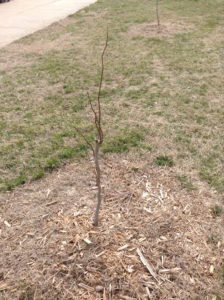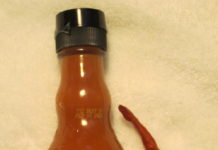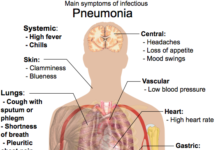by Aniket Patel and Anthony Cruz; Farnsley Middle School (Louisville, KY)
A group of 6th graders at Farnsley Middle School is tackling one of Louisville, Kentucky’s biggest problems – too much heat. Aniket (one of the authors) was selected for this group. We were awarded a $2000.00 grant to plant 30 trees around the campus. We were excited to meet after school to plant the trees with top soil, mulch, and gator bags.The project’s goal was to research if planting trees can reduce the effect of the Urban Heat Island (UHI) around our school. We will collect the data for 5 years and report our results to the UHI team in Louisville.
According to Wikipedia, UHI is when a metropolitan area is hotter than the area around it.
According to the EPA, a city with the population of 1 million can be 1.8–5.4 °F (1.0–3.0 °C) hotter than its surrounding. In the evening, there could be a difference of 22 °F.
According to Louisvilleky.gov, the Louisville Metro and Downtown areas average 10 °F hotter than the surrounding rural areas. Louisville has the 5th worst UHI effects in the whole world.
The money was given to the school by the Brightside and Ralph Knollenberg III Foundations. Brightside works to “unite people in clean and green activities to beautify the city and foster community pride.” The Ralph Knollenberg III Foundation believes “young people are stakeholders in a future with many environmental challenges.”
According to Louisvillleky.gov, we have lost 20,000 acres of trees. It will take about $7 million to regrow enough trees to reduce the heat island effects in Louisville. UHI has affected Louisville since the late 1800’s. Louisville has lost many forests and grasslands, which have been replaced by pavement and buildings. It also increased when manufacturing companies created waste, such as Carbon Dioxide (CO2) and Sulfur Dioxide (SO2) and released it into the air. The waste CO2 captures heat and stores it so it’s harder to cool down the city.
One of the main causes of UHI is when green space—trees and grasslands—is replaced by roads, buildings and sidewalks, as stated by thegreencity.com (a website that informs the public about UHI). In urban areas the tall buildings tend to store more heat so it is harder to cool the city down. That’s why evenings in urban areas are hotter than rural areas. In addition, the loss of trees in urban areas tends to increase the use of air conditioning which releases hot air outside.
In an email to Scijourner, Brent Fryrear from the University of Louisville and the Director of the Partnership for a Green City states, “the first impact of UHI on the people is heat illnesses.” This really affects the elderly and the young population. Also, people have to pay bigger bills because they have to use more and stronger air conditioning. Also, it’s harder to kill insects, because the winter is not cold enough to kill them and they get over populated.
According to followgreenliving.com (a website that promotes green living), some of the ways to reduce the effect of UHI are white roofs because it absorbs less heat from the sun, planting trees, and having green roofs or walls.
According to Fryrear, it is estimated that it will take 50 years to reduce the effects of UHI. To achieve this goal, many schools, including Farnsley, are willing to help.
Through a survey conducted in our school, 106 out of 115 (92%) 7th grade students said that they noticed that Louisville has gotten warmer over the past few years. Also, 96 out of 115 (83%) said that they are concerned that Louisville has gotten warmer.
We will begin taking data when the trees are older and we hope to see a reduction in temperature around the school campus.

This work is licensed under a Creative Commons Attribution-NonCommercial-NoDerivs 3.0 Unported License













